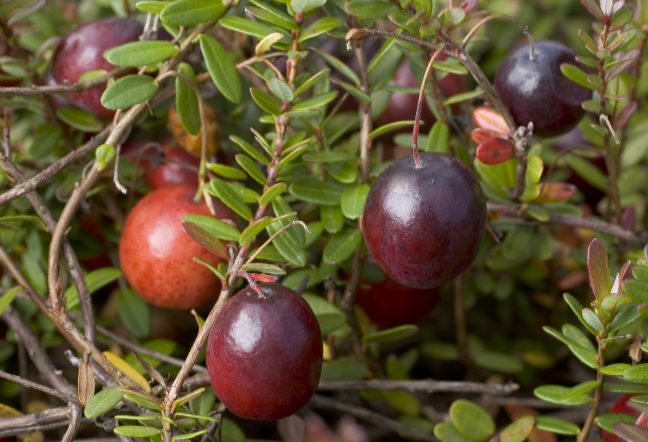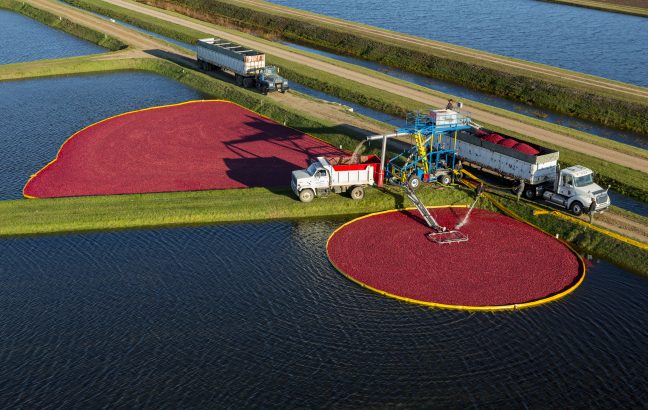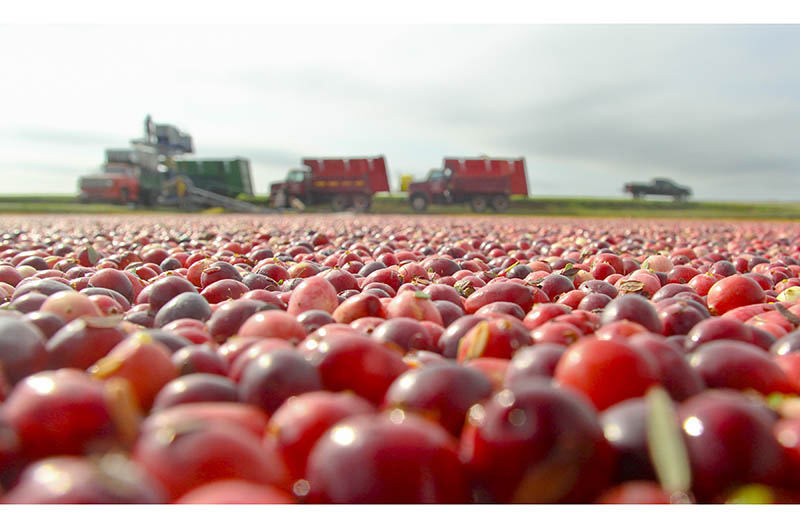Wisconsin’s cranberry growers are expecting a solid 2022 crop at 5.2 million barrels based on crop projections, according to the U.S. Cranberry Marketing Committee meeting held Aug. 16 in Galloway, New Jersey.

If the Wisconsin and other states’ projections stay on course, Wisconsin will remain the largest cranberry producing state growing and harvesting more than 63 percent of the nation’s supply and more than 50 percent of the world’s supply.
“We are pleased to hear from our growers that their crops look strong and healthy and are on track for a normal growing season,” said Tom Lochner, executive director of the Wisconsin State Cranberry Growers Association. “The state cranberry industry, and nationwide as a whole, is well positioned to bring in a solid crop and have the demand worldwide to fully utilize it.”
The U.S. CMC forecast marks the 28th year that Wisconsin has led the nation in cranberry production. The other largest cranberry growing states and their 2022 crop size projections are: Massachusetts at 1.89 million barrels; New Jersey at 550,000 barrels; Oregon at 510,000 barrels; and, Washington at 160,000 barrels.
In total, the U.S. crop is expected to be 8.3 million barrels. Wisconsin’s final 2021 crop came in at 3.9 million barrels.

“More than half the entire world’s supply of cranberries are grown on Wisconsin family farms, generating $1 billion in economic impact and providing thousands of local jobs across the Badger state, so it is always good news beyond our growers when the crop looks solid,” Lochner said. “We now hope Mother Nature continues to cooperate, and we get some cool fall nights for the berries to reach their dark red color, and then on to harvest, our favorite time of the year.”
The U.S. Cranberry Marketing Committee administers the Federal Marketing Order charged with ensuring a stable supply of quality cranberry products. The committee works to increase demand domestically and open new markets overseas.
Wisconsin cranberries are grown on 21,000 acres across 20 counties in central and northern regions of the state. Approximately 3 percent of this year’s crop will be sold as fresh fruit, and the remaining cranberries will be frozen and stored for longer-term sales as frozen berries, dried cranberries, juices and sauces.
Wisconsin’s harvest typically begins in late September and runs until mid-October.
WSCGA was founded in 1887 and is committed to developing and implementing programs that will assist growers in doing a better job of growing cranberries and strengthening the public support for the industry in Wisconsin.

